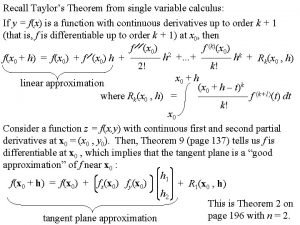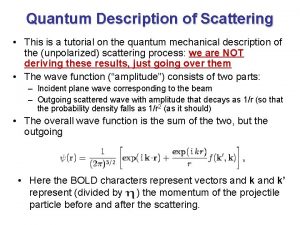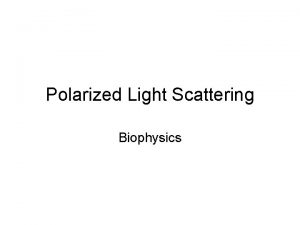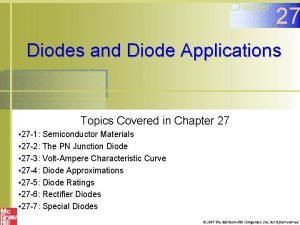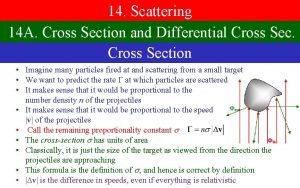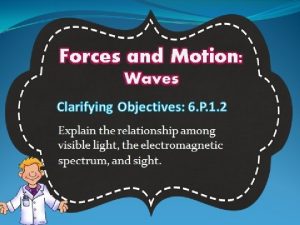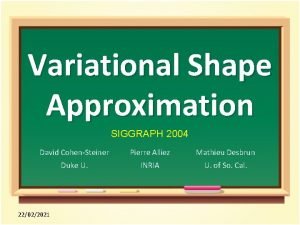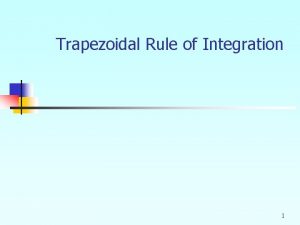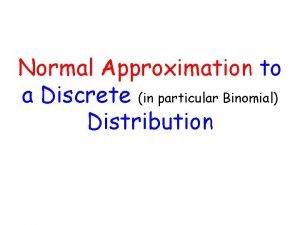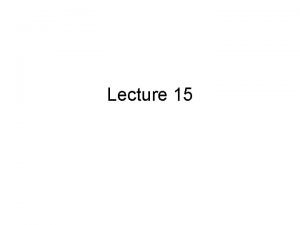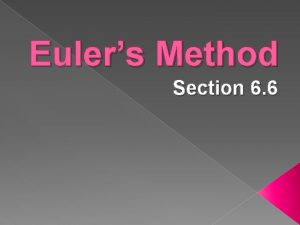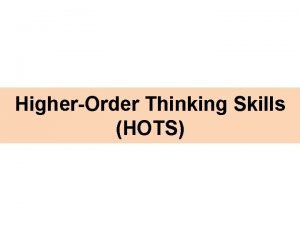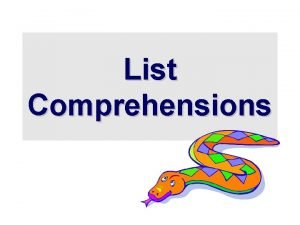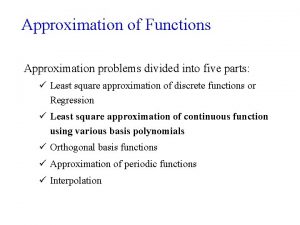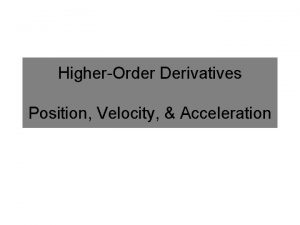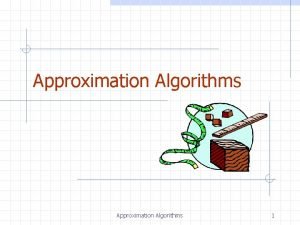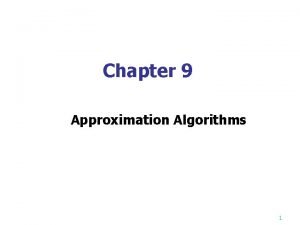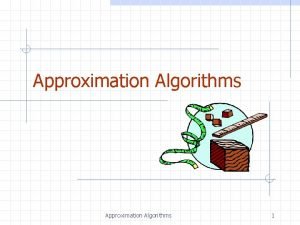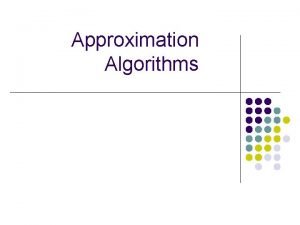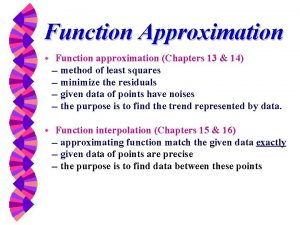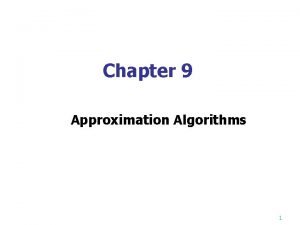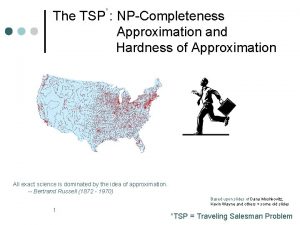Approximation of HigherOrder Transfer Functions Into 1 First














- Slides: 14


Approximation of Higher-Order Transfer Functions Into: 1 - First order plus time delay (FOPTD). 2 - Second order plus time delay (SOPTD).

Time Delay

Polynomial Approximations to Chapter 6 For purposes of analysis using analytical solutions to transfer functions, polynomial approximations for are commonly used. Example: simulation software such as MATLAB and Matrix. X. Two widely used approximations are: 1. Taylor Series Expansion: The approximation is obtained by truncating after only a few terms. 4

2. Padé Approximations: Chapter 6 Many are available. For example, the 1/1 approximation is, Implications for Control: Time delays are very bad for control because they involve a delay of information. 5

Chapter 6 Approximation of Higher-Order Transfer Functions In this section, we present a general approach for approximating high-order transfer function models with lowerorder models that have similar dynamic and steady-state characteristics. In Eq. 6 -4 we showed that the transfer function for a time delay can be expressed as a Taylor series expansion. For small values of s, 6

Chapter 6 • An alternative first-order approximation consists of the transfer function, where the time constant has a value of • Equations 6 -57 and 6 -58 were derived to approximate timedelay terms. • However, these expressions can also be used to approximate the pole or zero term on the right-hand side of the equation by the time-delay term on the left side. 7

Skogestad’s “half rule” Chapter 6 • Skogestad (2002) has proposed a related approximation method for higher-order models that contain multiple time constants. • He approximates the largest neglected time constant in the following manner. • One half of its value is added to the existing time delay (if any) and the other half is added to the smallest retained time constant. • Time constants that are smaller than the “largest neglected time constant” are approximated as time delays using (6 -58). 8

Example 6. 4 Chapter 6 Consider a transfer function: Derive an approximate first-order-plus-time-delay model, using two methods: (a) The Taylor series expansions of Eqs. 6 -57 and 6 -58. (b) Skogestad’s half rule Compare the normalized responses of G(s) and the approximate models for a unit step input. 9

Solution Chapter 6 (a) The dominant time constant (5) is retained. Applying the approximations in (6 -57) and (6 -58) gives: and Substitution into (6 -59) gives the Taylor series approximation, 10

(b) To use Skogestad’s method, we note that the largest neglected time constant in (6 -59) has a value of three. Chapter 6 • According to his “half rule”, half of this value is added to the next largest time constant to generate a new time constant • The other half provides a new time delay of 0. 5(3) = 1. 5. • The approximation of the RHP zero in (6 -61) provides an additional time delay of 0. 1. • Approximating the smallest time constant of 0. 5 in (6 -59) by (6 -58) produces an additional time delay of 0. 5. • Thus the total time delay in (6 -60) is, 11

Chapter 6 and G(s) can be approximated as: The normalized step responses for G(s) and the two approximate models are shown in Fig. 6. 10. Skogestad’s method provides better agreement with the actual response. Figure 6. 10 Comparison of the actual and approximate models for Example 6. 4. 12

Approximation of Higher-Order Transfer Functions Into: 1 - First order plus time delay(FOPTD). 2 - Second order plus time delay (SOPTD).

Approximation of Higher-Order Systems 1. 2. 3. 4. Into FOPTD or SOPTD Fast dynamics (Rule of thumb) Pole-Zero Cancellation Linearization.
 Taylors theorem
Taylors theorem First born approximation
First born approximation Transversality condition
Transversality condition First approximation of diode
First approximation of diode First born approximation
First born approximation Waves are repeating disturbances that transfer
Waves are repeating disturbances that transfer Differences between mechanical and electromagnetic waves
Differences between mechanical and electromagnetic waves Transfer of energy when a wave disappears into a surface
Transfer of energy when a wave disappears into a surface Variational shape approximation
Variational shape approximation Weddle's rule in numerical analysis
Weddle's rule in numerical analysis Trapezoidal sum
Trapezoidal sum Divms uiowa
Divms uiowa Flat earth map projection
Flat earth map projection Steady state kinetics
Steady state kinetics Eulers merhod
Eulers merhod
